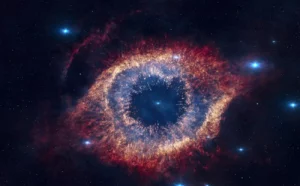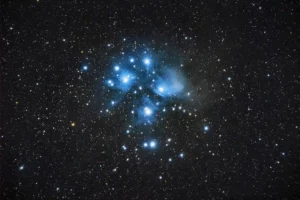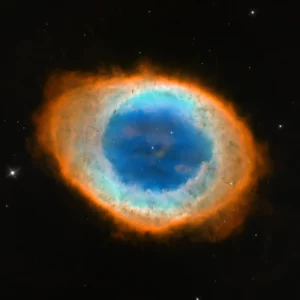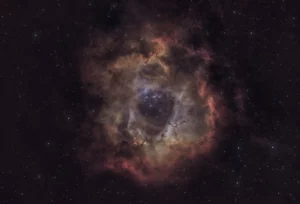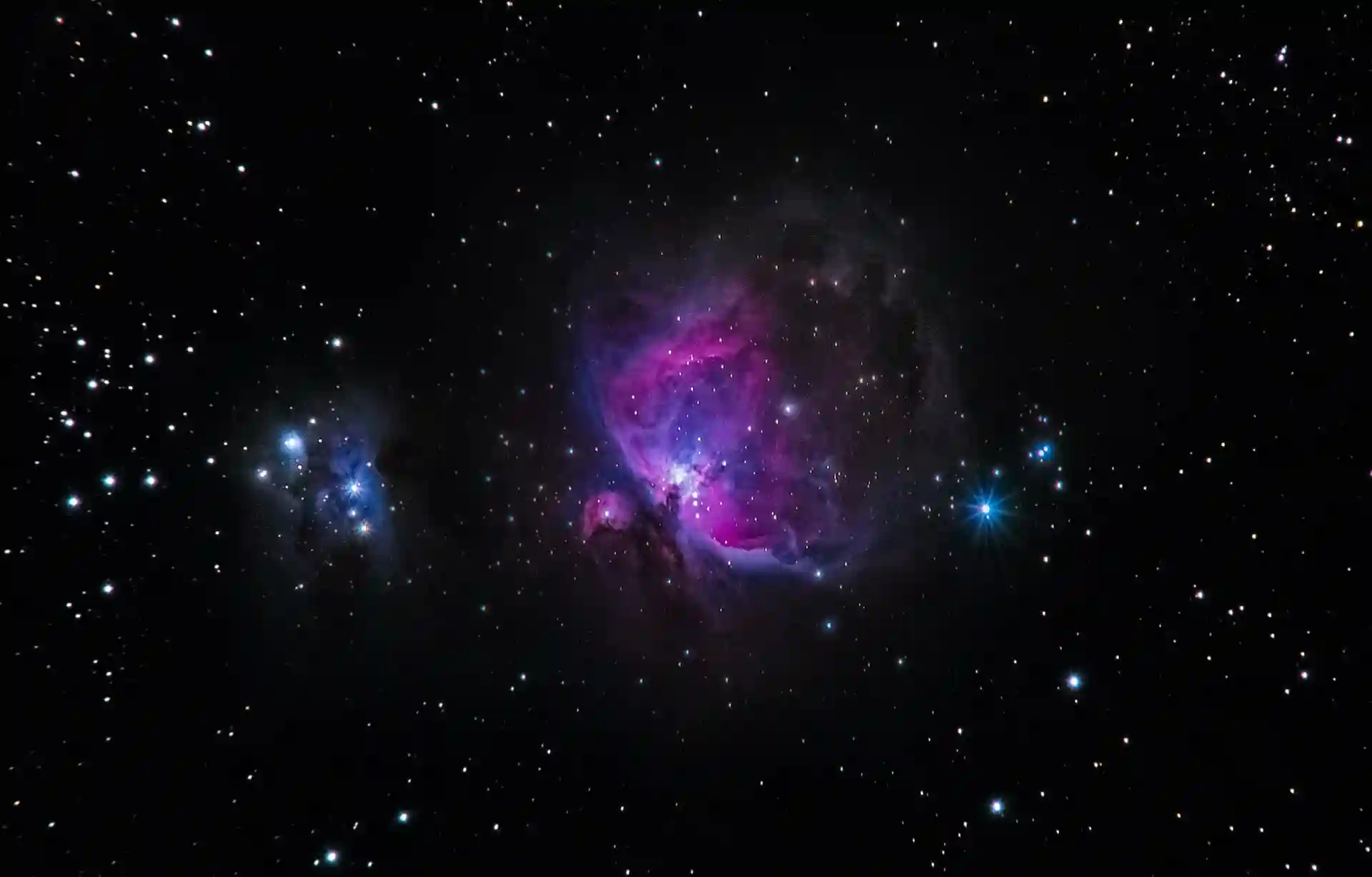
The Great Orion Nebula
In winter evenings Orion the Hunter stands high in the southeast at midnight, with his shield and club raised against the fierce charge of neighboring Taurus the Bull.
Directly between Orion’s brightest stars – white Rigel and golden orange Betelgeuse – is its Belt, set with three bright stars like bluish silver studs. From the Belt hangs a well-defined dagger made up of three other fainter stars, of which the one in the middle is actually not a star at all, but the Great Orion Nebula.
This is a luminous cloud of gas, generally considered the finest object of its kind in the heavens, also known as M42 and NGC 1976. Although easily visible to the naked eye, the nebula is not mentioned in any ancient records, and Galileo apparently never noticed this object with his telescope. The discovery is credited to Nicholas Peirsec, a French lawyer who in 1611 turned his telescope towards M42’s region of the sky and reported it as a cloudy nebulosity. Since then, every winter, countless skywatchers gaze at it on clear nights with awe and reverence.
The nebula is prominent in binoculars and is breathtaking in small telescopes under low power which reveal complex twists and swirls of ghostly glowing gas, spread over a degree of sky. At the heart of the nebula lies the 5th-magnitude multiple star Theta 1 Orionis, which lights up the surrounding gas. A telescope shows that Theta 1 actually consists of four stars of magnitudes 5.1, 6.6, 6.7 and 8.0 arranged in a rectangle. This group is popularly known as the Trapezium region, and from here the nebula stretches outward as two great, arching wings.
Careful viewing will also reveal a dark intrusion which extends from the north almost to the Trapezium. This marking is known as the Fish Mouth, and it separates the Orion Nebula from M43, another smaller nebula centered on the young irregular variable star NU Orionis.
The Orion Nebula surrounds hot young stars at the edge of a huge interstellar molecular cloud, which lies 1,300 light years away and has a diameter of 15 light years. It’s estimated to contain enough gas to make a cluster of thousands of stars, and will slowly disperse over the next 100,000 years.

Emil, an avid astronomy writer, formerly owned and ran nightskyinfo.com, making the universe more comprehensible for his readers. He has recently handed over its reins to Tom Urbain from starlust.org, ensuring that his legacy of simplifying the stars continues to enlighten and inspire.
Discover More Deep Sky Objects to Observe🔭
This page is part of our collection of deep-sky objects articles. If you enjoyed the read, then you’ll love the following articles.

